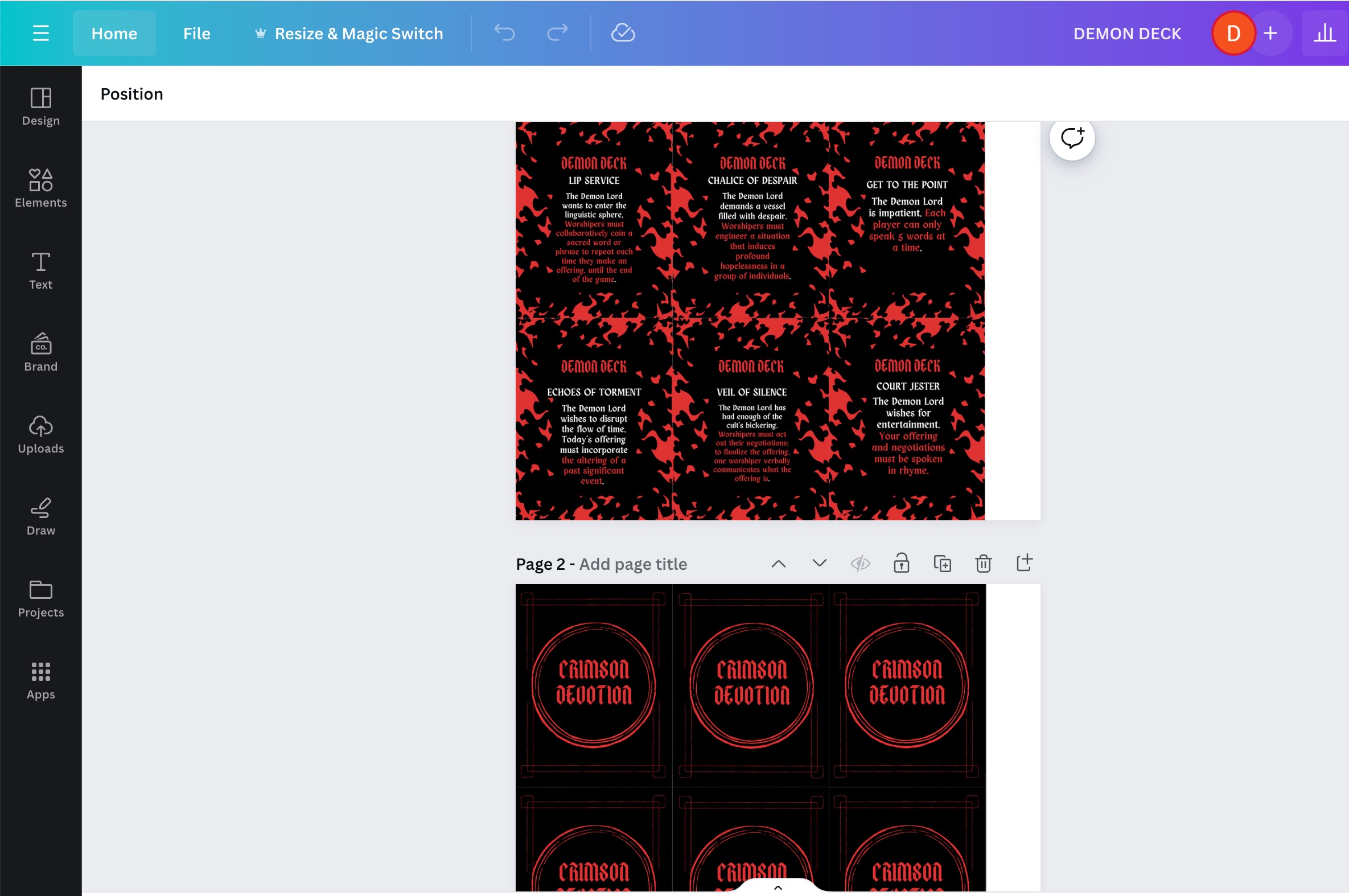By: Steph, Liese, and Kay
After a successful playtesting of “ Crimson Devotion,” we received a lot of feedback directed towards the player interactions arising out of our core game mechanics. In players’ experiences everyone’s goals were too diametrically opposed. Some people either felt that they had no allies or they felt steamrolled. Interestingly, we also received feedback on how some moments of the game didn’t have enough tension or uncertainty. Both of these issues depend on how players interact with each other and to what extent they use their imagination (like with many TTRPGs), but we decided to make some structural changes. In order to fix the amount of conflict in our game, we decided to stress in our rules the importance of the cult-building phase. That way, everyone would have stricter guidelines, which would give the characters more common ground and make negotiations a bit more challenging. The cult-building phase also gives us the opportunity to thematize the player’s appeasements by allowing them to establish a setting and how many people are in their cult. This should help with our issue of having players just tack on another clause to their offering (“yes, and”) because players will have to take into account all of this information before making appeasements. Making the cult building phase more robust and certain questions mandatory will make the game more immersive.
In addition, we rearranged player objectives in the game to remove the directly opposing, negative objectives and instead of more overlapping objectives to encourage more collaboration between players. This should help with players feeling steamrolled by others during negotiations. Instead of having the opposing objectives (which we relied on as our main source of conflict or tension), we introduced a GM figure with a probability roll mechanic. This character/aspect was added to ensure that the success of the offering wasn’t a guarantee (essentially adding more risk). This mechanic will only be evoked if the final offering (nearly) exceeds the limitations that were established during the cult-building phase or if the offering is simply difficult to pull off; thus, enforcing the rules that the players established themselves. Our goal, with this, is not to limit the imagination of the players, but to provide a specific space and enable them to be precise in their contributions to their “cult world.” The GM is also described in the game as the Crimson Demon Lord, so the god that the players are working to appease is directly present and can act as a pressure for negotiations.
Finally, it’s important to note our Exquisite Corpse connection in this game design. In the activity, Liese’s character was a demon-like figure with omniscient (though bound by chance) powers who cried blood. We incorporated the blood, though this time as a sacrifice on part of the players, in our game’s negotiation resolution mechanic, as well as the demonic inspiration in our narrative and fundamental concept. The character also resided in modern-day Bushwick, New York, which we incorporated in a number of our initial visions for modern-day, even cool and online, cults, as opposed to historical examples.
